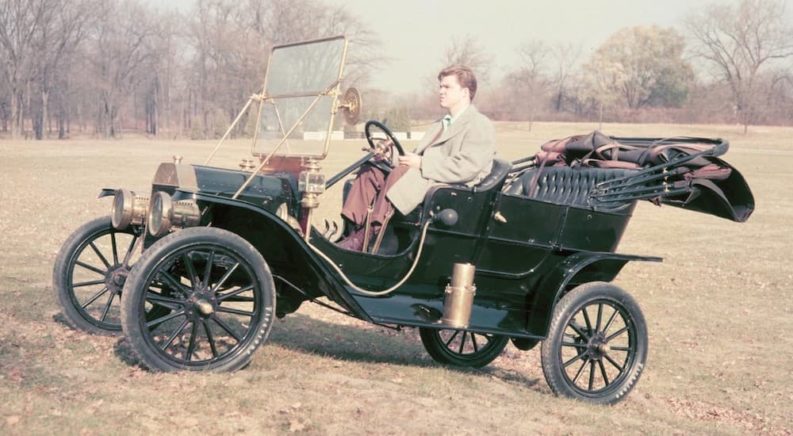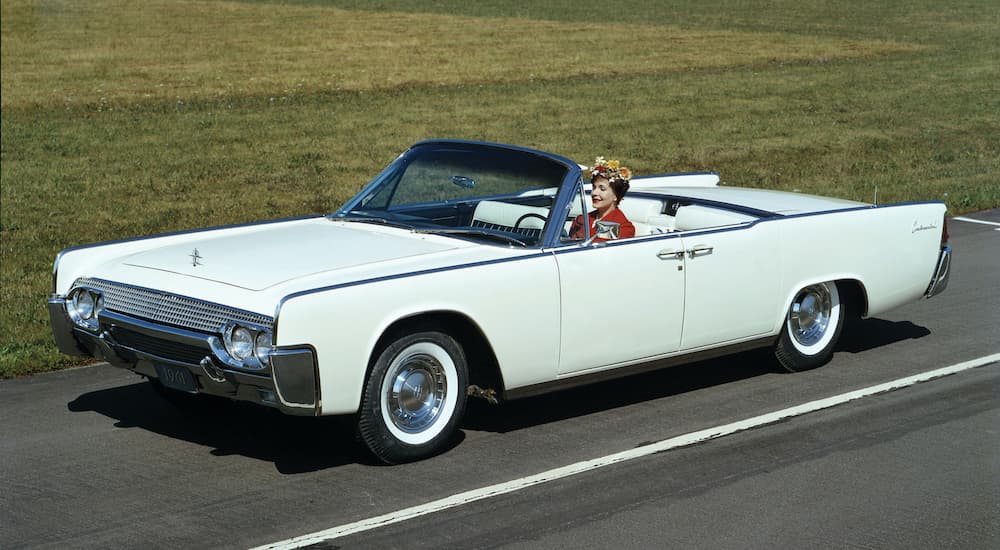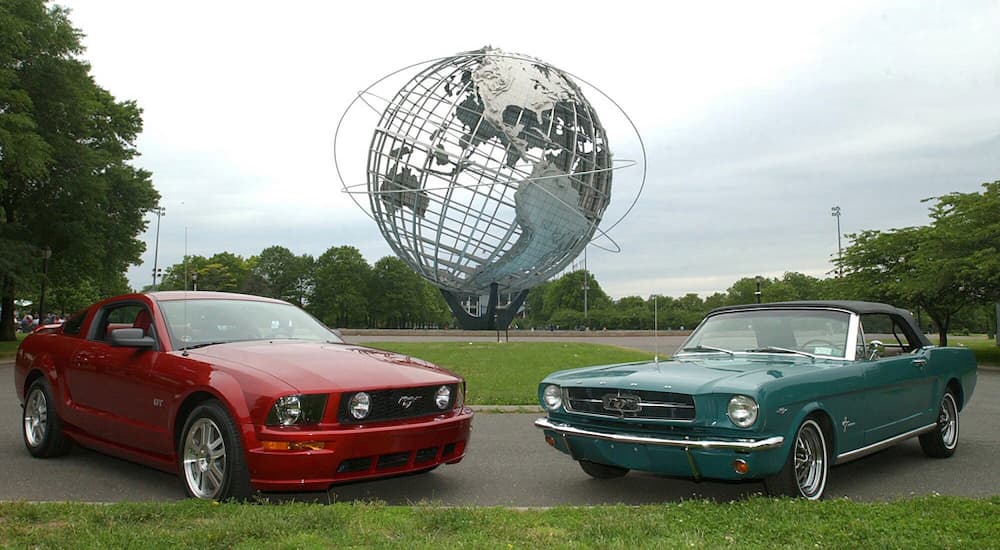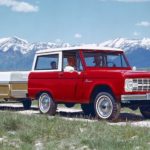Because classic cars are part of American culture, and Ford has been a major player in forming that culture, I thought it would be interesting to build a list of Ford models that have contributed to automotive history. So many cars built by Ford remain exemplars of how automobiles have utterly changed American life, making it possible to travel on our own schedules and enjoy the freedom of driving beyond the limits of asphalt. Along with some of Ford’s most famous cars like the Model T, life around the globe has been drastically altered by the production of inventive vehicles produced by the Blue Oval. Though most of the vehicles on this list are more likely found in museums than at a used Ford dealership, enthusiasts undoubtedly have collections over which many classic car lovers would drool in envy.
Where It All Began
Ford Motor Company has been in business since 1903, when Henry Ford convinced 12 investors to join him in a business venture to build automobiles. Though this company grew to become one of the largest manufacturing businesses in the world, it wasn’t Ford’s first company—and it wasn’t the first for some of his investors, either. In fact, Ford started two other companies before eventually hitting the mark with his third.
First, he formed the Detroit Automobile Company in 1899—which dissolved in 1901, and then Ford went on to start the Henry Ford Company that same year. When investor Henry Leland was brought into that second company, Ford left. Leland went on to build Cadillac, while Ford started his third automotive venture. Then, two investors from the Ford Motor Company, named John and Horace Dodge, eventually left to start a company in their own name.
The Model T Kicks Off Historic Production in 1908
It goes without saying that the Model T was one of the most important Ford vehicles of all time, and much has been written about it over the many decades of automotive production. Prior to the Model T, Ford had produced several other vehicles with model names from other letters of the alphabet. However, he didn’t actually use the entire alphabet before arriving at ‘T’.
With the production of the Model T, Ford hit on a vehicle that was easy to drive and cheap to repair. Then, he drove sales higher with loads of ads in Detroit newspapers. Ford dealers around North America played their own part in creating the vast machine of supply and demand for the Model T, many of whom became wealthy from their sales.
By 1913, Ford altered the pace of production by introducing the assembly line in his Detroit factory. This choice meant more cars could be produced in shorter periods of time—a game-changing decision for history. Ford set a new standard for automotive production, hitting a record number of vehicles produced under a single nameplate during its time. The record stood for about 45 years, until the VW Beetle finally broke it when it sold over 15 million units.
During the years of its production—lasting until 1927, the Model T saw historic shifts in the industry. Most notably, the introduction of the middle class through higher wages for factory workers and a reduction in costs for purchasing a car made Fords widely affordable for more Americans.
Wealth Rolled into the 1940s with Lincoln Continental
After Ford left his second company and Leland renamed it, competition with brands like Cadillac became a vested interest for Henry Ford. In response to the success of luxury brands, Ford purchased the Lincoln Motor Company in 1922…from none other than his old business partner, Henry Leland. By this time, Henry Ford had turned over the operations of the Ford Motor Company to his son, Edsel, who also oversaw operations at Lincoln. For nearly two decades, production at Lincoln focused on models that did well in competition against other luxury brands, and the once floundering company made profits almost immediately under Ford’s oversight.
It was a random fluke that Edsel Ford came up with the idea to have a vehicle designed for a family vacation to Florida; it would be produced as a one-off that would become a famous car: the Lincoln Continental. Edsel wanted the car to look European, and set a Ford designer to work on coming up with something suitable for his trip. Once it was revealed, Edsel got so much attention for its design that he decided to produce it en masse. Mickey Rooney purchased the first Continental off the line in 1940, and then only three years later, Edsel passed away as the only child of Henry Ford and his wife, Clara.
Lincoln remains historically changed by Edsel’s design choices—not the least of which was his addition of the Continental, which was in production until 2020. Within the range of vehicles produced under the Lincoln division of Ford, limousines became a popular model. They’re practically emblematic of class and celebration today.
F-Series Trucks Take Over in the 1950s
Truthfully, the first Ford truck produced on its own dedicated platform arrived on the market in the US in 1948. Prior to that, Ford had been producing trucks on other platforms since 1917, with the Model TT being first and moving through to the Model 50 Pickup. The first F-Series truck generation lasted from 1948 to 1952, and it came in eight different sizes and weight ratings, from the half-ton F-1 to the three-ton F-8.
In the next generation, Ford changed over to using F-100 as the F-1 signifier. Then, they started referring to other trucks in the series as F-250, F-350, and so on. Eventually, in 1984, Ford began referring to the F-100 as the F-150 to match the rest of the series signifiers.
By the second generation of F-series trucks, Ford began building trucks with cabin comforts typically found in cars. Dome lights, sun visors, and armrests were part of the features lists for this generation, and it started a revolution of buyers like farmers who could use their work trucks as family vehicles. By 1959, the F-Series trucks could option four-wheel drive; in the ’60s, Ford changed the suspension for more comfortable ride quality; and during the same decade, Ford offered the first four-door crew cab. Once the F-Series headed into the 70s, the square-nosed body styling matured into a design that stuck for several decades, only replaced by a more rounded appearance at the turn of the century.
For over 40 years, the F-100 and F-150 trucks laid claim to the highest sales for the segment in the US, and then took the overall highest vehicle sales in the country in 1981. Today, Ford is still making history with the company’s first electric pickup truck: the Ford F-150 Lightning.
Mustang Muscles into the ’60s
The Mustang roared onto the automotive scene with thrilling ride quality and wide-open possibilities for customization at its command. Ford went all-out for the Mustang’s introduction to the world in 1964 at the New York World Fair. The motor company had none other than the Walt Disney Company build a pavilion in which admirers could come observe the new addition to the Ford stable.
It was such an instant success that Ford sold 22,000 cars on its first day of sales, despite the expectation of selling only 100,000 in the Mustang’s first year. In fact, Ford sold 681,000 models for its first year of production—almost seven times what it projected. At its start, the Mustang could be optioned with one of three engines—including a V6 and two V8s—and had three available body styles: a convertible, notchback, and fastback.
Wildly embraced by the public, the Mustang immediately found itself in movies like Goldfinger and Bullitt, achieving instant fame. Even though the first sales were stunning, Ford began playing with the design of the Mustang, making it larger and larger—until sales dropped below 200,000 in the early 70s. By the time the oil crisis caused new regulations for auto manufacturers to reduce emissions and raise fuel efficiency, Ford restored a more compact version of the Mustang.
Sales increased again, and then Ford changed to the now-collectible Fox platform until 1993. Numerous iterations of body styling followed until the early 2000s, when Ford finally restored more classic Mustang cues to the beloved pony car. This resulted in GM and Dodge bringing back the Camaro and Challenger as competition.
In 2018, Ford built and sold its ten-millionth Mustang, and the pony car remains one of only three to continue production. Throughout the history of the Ford Motor Company’s innovative vehicles, each of these designs brought on shifts in culture—and excitement for the potential they offered for American life. To this day, Ford remains one of the most successful automotive companies in the world—and continues to innovate ideas that challenge the norm.






